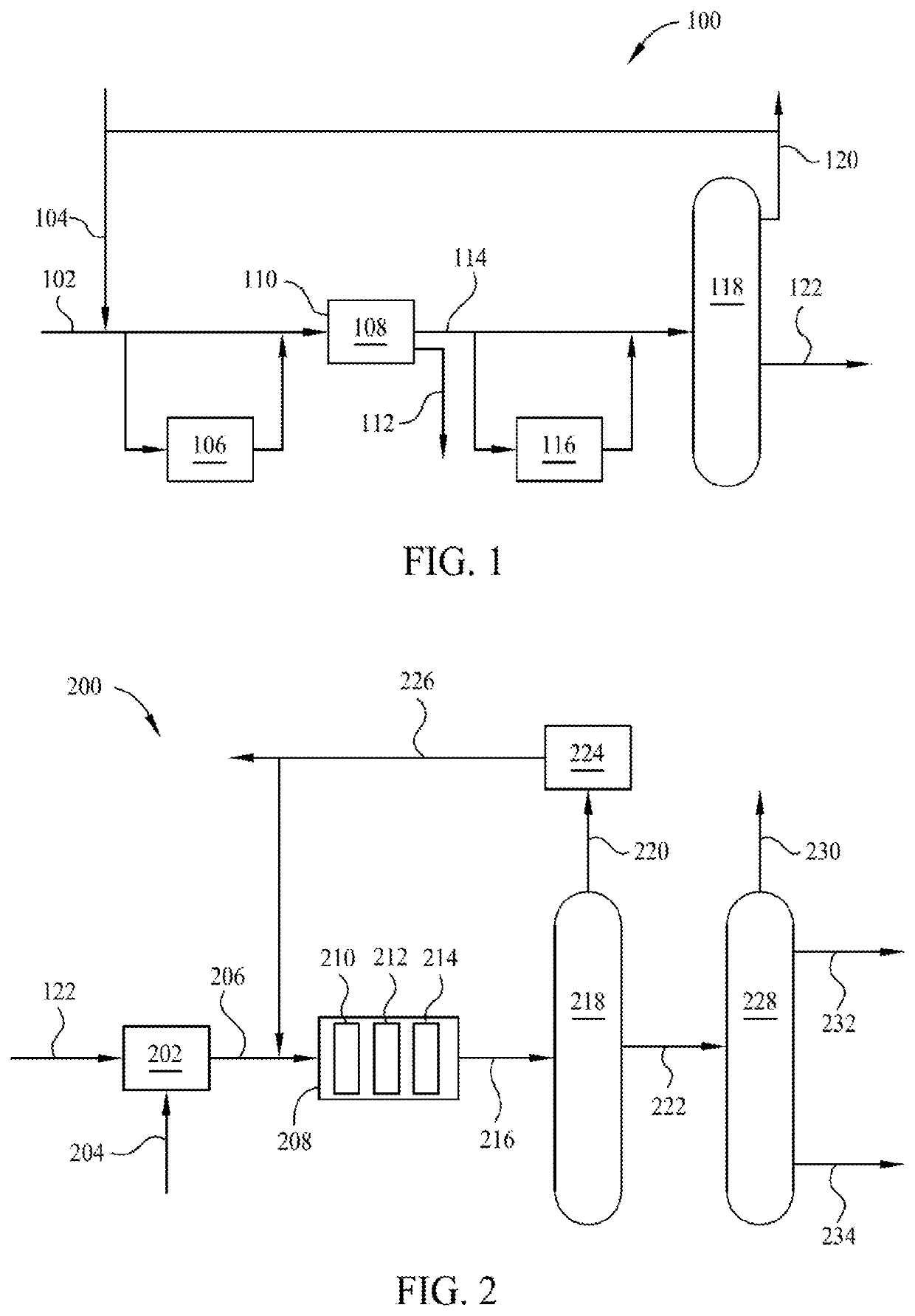Solvent and temperature assisted dissolution of solids from steam cracked tar
a technology of steam cracking and solvent, which is applied in the direction of hydrocarbon oil treatment hydrocarbon oil refining, etc., can solve the problems of poor compatibility between sct and other heavy hydrocarbons, sct is a less desirable blendstock, and scts produced under specific conditions are generally poor compatibility with scts produced under different conditions, so as to reduce particle content and improve yield
- Summary
- Abstract
- Description
- Claims
- Application Information
AI Technical Summary
Benefits of technology
Problems solved by technology
Method used
Image
Examples
Embodiment Construction
[0017]Embodiments provide processes that include the discovery to preferentially remove, particularly by controlling solvent concentration and temperature, certain higher density components (e.g., particles) in the hydrocarbon feed, in which can provide hydrocarbon feeds having reduced particle content. Controlling solvent concentration and temperature can dissolve and / or decompose (e.g., disaggregate) many, if not all, of the particles that tend to cause fouling of downstream centrifuges, hydroprocessing reactors, and other portions of the process system, allowing for improved yields by, for example, leaving non-particulate components in the lower density portion of a hydrocarbon feedstock after centrifugation.
[0018]In one or more embodiments, a process for preparing a low particulate liquid hydrocarbon product is provided and includes blending a tar stream containing particles with a fluid and heating to a temperature of 250° C. or greater to produce a fluid-feed mixture that cont...
PUM
| Property | Measurement | Unit |
|---|---|---|
| temperature | aaaaa | aaaaa |
| wt % | aaaaa | aaaaa |
| temperature | aaaaa | aaaaa |
Abstract
Description
Claims
Application Information
 Login to View More
Login to View More - R&D
- Intellectual Property
- Life Sciences
- Materials
- Tech Scout
- Unparalleled Data Quality
- Higher Quality Content
- 60% Fewer Hallucinations
Browse by: Latest US Patents, China's latest patents, Technical Efficacy Thesaurus, Application Domain, Technology Topic, Popular Technical Reports.
© 2025 PatSnap. All rights reserved.Legal|Privacy policy|Modern Slavery Act Transparency Statement|Sitemap|About US| Contact US: help@patsnap.com

